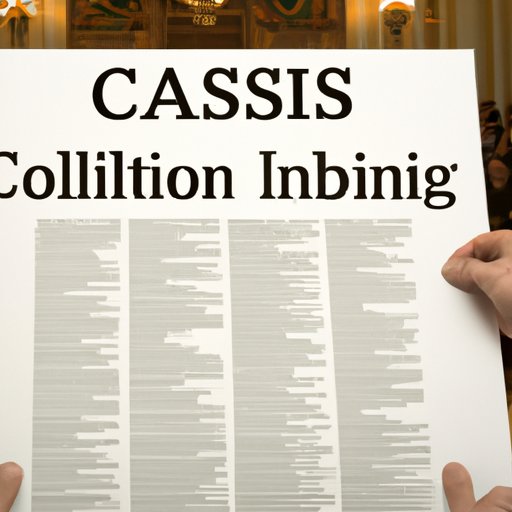Introduction
The legislative process is an important part of the American political system, and understanding how a bill gets passed can be a complex task. A bill is a proposed law that must pass through several steps before becoming a law. This article will explore the different steps and processes involved in passing a bill.

Examining the Steps for Passing a Bill Through Congress
The process of passing a bill begins with its introduction in either the House of Representatives or the Senate. The bill is then assigned to a committee, which reviews it and decides whether or not to move it forward. If the committee approves the bill, it is sent to the full chamber for debate and a vote. If the bill passes the vote, it is then sent to the other chamber for further consideration.
After the bill has been approved by both chambers, it is sent to a conference committee, made up of members from both chambers. This committee works to reconcile any differences between the two versions of the bill. Once the conference committee has reached an agreement, the final version of the bill is sent back to each chamber for another vote. If the bill passes both votes, it is then sent to the President for signing. If the President signs the bill, it becomes law.
Analyzing the Role of Committees in Passing Bills
Committees play an important role in the passage of bills. Committees are groups of members within a legislative body who are responsible for researching and reviewing proposed legislation. There are several types of committees, including standing committees, select committees, and joint committees. Standing committees are permanent committees that focus on specific policy areas, while select committees are temporary committees created to address specific issues. Joint committees are composed of members from both the House and Senate.
Committees have the power to influence the passage of bills by holding hearings, conducting research, and making recommendations. They can also amend bills and report them favorably or unfavorably to the full chamber.
Understanding the Role of Lobbyists in the Passage of Legislation
Lobbyists are individuals or organizations that attempt to influence the passage of legislation. Lobbyists may represent businesses, nonprofits, or other special interests. They may work directly with legislators, or they may work indirectly by attempting to influence public opinion. Lobbyists use a variety of tactics to influence the passage of bills, including drafting legislation, testifying before committees, and organizing grassroots campaigns.

Investigating the Effectiveness of Congressional Hearings on Passing Bills
Congressional hearings are public meetings held by congressional committees to gather information about a particular issue. During hearings, witnesses give testimony and answer questions from the committee. Hearings can be used to build support for a bill or to oppose it. They can also be used to gain information about a particular issue or to educate the public about an issue.
Hearings can be effective in influencing the passage of bills, but they are not always successful. For example, a hearing on gun control may produce strong opinions from both sides, but it may not result in the passage of a bill. On the other hand, a hearing on health care reform may lead to the passage of a comprehensive bill.

Exploring the Impact of Public Opinion on the Passage of Bills
Public opinion plays an important role in the passage of bills. Public opinion can be measured through polls and surveys, and it can be used to gauge support for or opposition to a particular bill. Legislators take public opinion into account when deciding whether or not to support a bill, and they often use public opinion to guide their actions.
For example, in 2018, a poll found that 68% of Americans supported a ban on assault weapons. In response to this, many legislators introduced bills to ban assault weapons, and several states passed laws banning them. This shows how public opinion can be a powerful force in influencing the passage of bills.
Conclusion
In conclusion, passing a bill is a complex process that involves several steps and processes. The introduction of a bill, assignment to a committee, marking up the bill, floor debates and votes, conference committees, and presidential signing are all necessary steps in the legislative process. Committees, lobbyists, and public opinion can also influence the passage of bills. Understanding how a bill gets passed can help citizens better participate in the democratic process.
For more information on the legislative process, visit the United States Senate website.
(Note: Is this article not meeting your expectations? Do you have knowledge or insights to share? Unlock new opportunities and expand your reach by joining our authors team. Click Registration to join us and share your expertise with our readers.)
